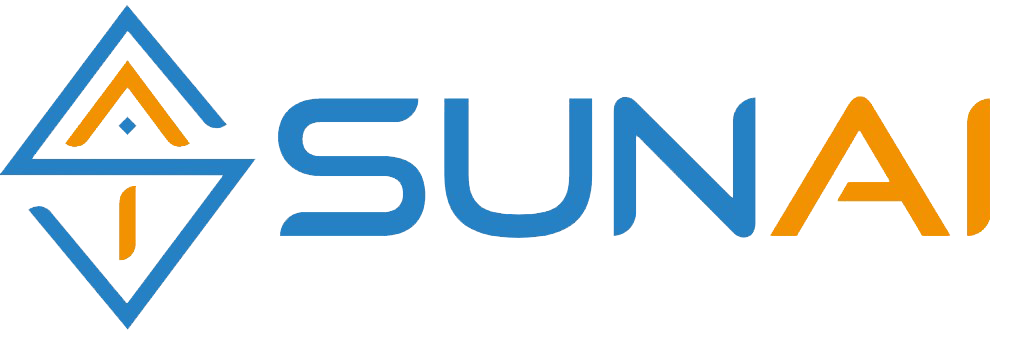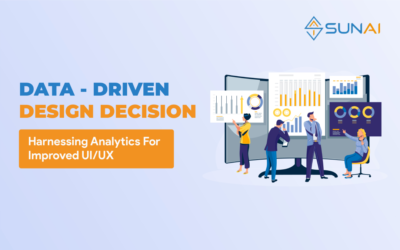In today’s rapidly evolving digital landscape, cybersecurity trends have become a focal point for organizations across all industries. With technology advancements, the accompanying threats and risks of cyber attacks have also escalated, making it imperative for software development to prioritize data protection and privacy. Emphasizing secure coding practices, encryption techniques, and vulnerability management is essential for developers to construct resilient and secure systems.
This article delves into the latest cybersecurity trends in software development, shedding light on their pivotal role in safeguarding data and privacy. From enhanced encryption protocols to proactive vulnerability management, these trends are shaping the future of cybersecurity in software development, equipping organizations with the tools to effectively combat emerging cyber threats and ensure the integrity of their systems.
The Evolving Cyber Threat Landscape
In today’s rapidly evolving digital landscape, cybersecurity trends play a crucial role in safeguarding organizations against the ever-changing tactics of cybercriminals. With technological advancements and increased interconnectivity, the threat of breaches and data theft looms. Staying abreast of emerging cybersecurity trends is imperative for organizations to effectively fortify their defenses and mitigate potential risks. By remaining vigilant and proactive in understanding the evolving nature of cyber threats, businesses can better protect their sensitive data and ensure the uninterrupted delivery of critical services.
Sophistication of Cyberattacks: A Growing Threat
In today’s digital landscape, one of the most significant cybersecurity trends is the increasing sophistication of cyberattacks. Attackers now utilize powerful hacking tools, cybercrime forums, and support from nation-state-sponsored hacking groups to breach security systems. This heightened level of sophistication has led to severe consequences, including data breaches, financial losses, and reputational damage. Organizations and individuals alike are facing a growing threat, as these attacks continue to evolve in complexity and impact. Both cybersecurity professionals and the general public must stay vigilant and proactive in safeguarding against these advanced cyber threats.
Diverse Attack Vectors
The landscape of digital threats has evolved to include a wide array of attack vectors, ranging from malware and ransomware to Distributed Denial of Service (DDoS) attacks. In many cases, attackers employ a combination of these methods, such as using phishing emails to launch ransomware attacks and deploying malware to encrypt data. In light of these cybersecurity trends, it is imperative for organizations to proactively fortify their defenses against these diverse and increasingly sophisticated threats.
Target Variety
The scope of digital threats has expanded beyond large corporations and government agencies. Smaller businesses, healthcare organizations, educational institutions, and even individuals are increasingly becoming prime targets for cyber attacks. These entities are being targeted by attackers with the intent to disrupt operations, steal valuable personal information, or gain unauthorized access to systems. As cybersecurity becomes more crucial than ever, it’s evident that the landscape is evolving rapidly. Keeping abreast of the latest cybersecurity trends is imperative to safeguard against these threats. Understanding and adapting to the evolving landscape of cybersecurity trends is essential for all entities to ensure their digital safety and resilience in the face of these growing threats.
Nation-State Actors
The involvement of nation-state actors in cyber warfare and espionage has added a new dimension to the digital threat landscape. Countries invest heavily in developing cyber capabilities, and state-sponsored hacking groups have been responsible for high-profile attacks in recent years. These attacks can have geopolitical implications and blur the line between traditional and cyber warfare.
Supply Chain Attacks
In recent years, supply chain attacks have become a significant concern in the cybersecurity landscape. Attackers strategically target the supply chains of organizations, aiming to compromise the integrity of products and services. The SolarWinds hack exemplifies the devastating impact of such attacks, emphasizing the need for robust security measures throughout the supply chain. As organizations face increasingly sophisticated threats, staying abreast of cybersecurity trends, including the growing prevalence of supply chain attacks, is crucial for implementing effective defense strategies.
IoT Vulnerabilities
The expansion of Internet of Things (IoT) devices has introduced new vulnerabilities in the digital threat environment. Many IoT devices lack sufficient security capabilities, making them susceptible to exploitation by malicious actors. Compromised IoT devices can be used to initiate DDoS attacks or breach home networks, posing significant risks to individuals and organizations.
AI and Machine Learning in Attacks
Attackers are exploiting artificial intelligence (AI) and machine learning (ML) to bolster their capabilities. These technologies automate attacks, produce more authentic phishing emails, and pinpoint weaknesses in target systems. As AI and ML progress, their impact on digital threats is set to expand, necessitating organizations to embrace sophisticated defense mechanisms.
As AI and ML gain traction, cyber threats are becoming more complex and challenging to combat. Organizations must remain vigilant and proactive in their approach to cybersecurity to effectively mitigate the evolving risks posed by these advanced technologies.
Regulatory and Compliance Challenges
The evolving digital threat landscape has prompted governments and regulatory bodies to introduce new cybersecurity regulations and standards. Organizations face increased pressure to comply with these requirements, but achieving and maintaining compliance can be challenging due to the dynamic nature of digital threats. GDPR compliance, for example, requires organizations to implement robust data protection measures and privacy controls.
It has led to increased pressure on organizations to comply with new cybersecurity regulations and standards.
Response and Resilience
Building effective incident response and resilience strategies has become paramount. Organizations must focus on preventing attacks and detecting, mitigating, and recovering from breaches. Regular security assessments, employee training, and robust incident response plans are essential in minimizing the impact of cyber attacks.
Global Collaboration
The transnational nature of digital threats has made international collaboration crucial. Governments, law enforcement agencies, and cybersecurity organizations worldwide are working together to share threat intelligence, track down cybercriminals, and mitigate threats on a global scale. This collaboration enhances the collective defense against cyber attacks and promotes information sharing to stay ahead of evolving threats.
Also Read
Top Cybersecurity Trends in Software Development
Cybersecurity trends are constantly evolving, and staying ahead of the curve is crucial for safeguarding sensitive information. With software development at the forefront of data protection, developers must remain abreast of the latest advancements in this area. By staying informed about cybersecurity trends, developers can effectively implement robust security measures, defend against emerging threats, and ensure the integrity of their systems and user data.
Given below are some top cybersecurity trends that are crucial for software development companies to follow:
Secure Coding Practices
Secure coding practice plays a crucial role in safeguarding sensitive information and mitigating potential risks. Secure coding practices are integral to this effort, encompassing the implementation of robust security measures throughout the software development lifecycle. From writing secure code to conducting thorough code reviews and performing comprehensive security testing, adherence to these practices is paramount.
By embracing secure coding practices, developers can effectively minimize vulnerabilities and proactively reduce the risk of exploitation. As the cybersecurity landscape continues to evolve, staying abreast of emerging cybersecurity trends, such as the emphasis on secure coding practices, is essential for maintaining the integrity and security of digital assets.
Encryption Techniques
Encryption stands as a fundamental technique for safeguarding data. It plays a crucial role in protecting data at rest and in transit. Robust encryption algorithms are essential for securing sensitive information against cyber threats. Developers should prioritize the implementation of strong encryption methods across various fronts. This encompasses encrypting data stored in databases, ensuring secure communication channels through Transport Layer Security (TLS), and safeguarding files and emails.
As cybersecurity trends continue to highlight the importance of data protection, the strategic integration of robust encryption measures remains paramount in fortifying digital defenses against evolving cyber threats.
Vulnerability Management
Vulnerability management, a key aspect of cybersecurity trends, encompasses the identification, prioritization, and mitigation of software vulnerabilities. It is imperative for developers to consistently scan their codebase for vulnerabilities using automated tools and conduct penetration testing to uncover potential weaknesses. Promptly addressing these vulnerabilities is crucial in minimizing the risk of exploitation by attackers. By proactively managing vulnerabilities, organizations can bolster their cybersecurity posture and reduce the likelihood of successful cyber attacks.
Developers should regularly scan their codebase for vulnerabilities using automated tools and perform penetration testing to identify potential weaknesses. By promptly addressing vulnerabilities, developers can minimize the risk of exploitation by attackers.
Also Read
Container Security
Containerization has become increasingly popular in software development, enabling applications to run in isolated environments. However, containers also bring forth new cybersecurity challenges. Developers must prioritize ensuring the security of container images, implementing stringent access controls, and regularly updating container dependencies to ward off potential security breaches. Embracing these cybersecurity trends in containerization is essential for safeguarding sensitive data and maintaining the integrity of software systems.
DevSecOps Integration
DevSecOps is an approach that integrates security practices into the software development process. By incorporating security from the early stages of development, developers can identify and address vulnerabilities more effectively. DevSecOps promotes collaboration between developers, operations teams, and security professionals to build secure and resilient systems. Embracing DevSecOps reflects the current cybersecurity trends, emphasizing the importance of proactive security measures throughout the software development lifecycle.
Also Read
Zero Trust Architecture
Zero Trust Architecture is an approach to security that assumes no trust in any user or system, regardless of their location or network. Developers can implement Zero Trust principles by implementing strong authentication mechanisms, enforcing access controls, and continuously monitoring for suspicious activities. This ensures that only authorized users and devices can access sensitive data.
Embracing this cybersecurity trend is crucial in today’s ever-evolving threat landscape, where traditional security measures may fall short in safeguarding against sophisticated cyber threats. With Zero Trust Architecture, organizations can fortify their defenses and proactively protect their valuable assets from potential breaches and unauthorized access.
Artificial Intelligence for Threat Detection
Artificial intelligence (AI) and machine learning (ML) are revolutionizing cybersecurity trends. Cybersecurity trends show that developers can utilize AI-powered tools to fortify threat detection capabilities. These technologies enable the analysis of vast data sets, identification of patterns, and detection of anomalies signaling potential cyber-attacks. Leveraging AI for threat detection empowers developers to respond swiftly to evolving threats, thereby bolstering overall cybersecurity posture.
Cloud Security
The rising adoption of cloud services makes prioritizing cloud security imperative. To safeguard data stored in the cloud, developers must enforce stringent security measures. This involves securely configuring cloud environments to mitigate vulnerabilities, implementing robust data encryption to shield sensitive information from unauthorized access, and establishing regular monitoring protocols to promptly detect and address security incidents.
By prioritizing cloud security, organizations can instill confidence in their stakeholders, maintain regulatory compliance, and safeguard their sensitive data from potential breaches or unauthorized access. Additionally, a proactive approach to cloud security can bolster an organization’s resilience against evolving cyber threats, ultimately contributing to the overall stability and trustworthiness of its digital infrastructure.
Also Read
Compliance with Data Privacy Regulations
In the era of data privacy regulations such as GDPR, developers are tasked with ensuring adherence to these standards. This entails integrating privacy-by-design principles into their processes, obtaining user consent for data processing, and establishing mechanisms for data subjects to exert their rights. By making data privacy a priority, developers not only foster trust with users but also mitigate the risk of facing legal repercussions. Embracing these requirements is essential for developers to navigate the evolving landscape of data protection laws and to demonstrate their commitment to safeguarding user privacy.
Secure Software Supply Chain
The software supply chain involves creating, distributing, and maintaining software. To safeguard against tampering and unauthorized modifications, developers must prioritize secure practices. This includes verifying the integrity of software components and employing secure repositories. Moreover, implementing code signing adds another layer of security by ensuring the authenticity of the code. By integrating these measures, developers can mitigate the risk of introducing malicious code into the supply chain, thereby enhancing the overall security of the software.
Continuous Monitoring and Threat Intelligence
Continuous monitoring and threat intelligence are crucial for developers to remain informed about the latest threats and vulnerabilities. By regularly monitoring system logs, network traffic, and user behavior, developers can promptly detect and respond to security incidents, bolstering their overall cybersecurity posture.
Integrating threat intelligence feeds into their systems can offer valuable insights into emerging threats, enabling organizations to proactively defend against potential security breaches. This proactive approach empowers developers to stay one step ahead of cyber threats, ultimately enhancing the security of their systems and data.
Employee Security Awareness
Developers play a crucial role in enhancing organizational security by prioritizing employee security awareness. This can be achieved through comprehensive security training programs that equip employees with the knowledge and skills to identify and respond to potential security threats. Fostering a culture of cybersecurity within the organization further reinforces the significance of maintaining a secure work environment.
Regular security awareness initiatives serve as a platform to educate employees about best practices, emerging threats, and the criticality of data protection, thereby creating a vigilant and informed workforce that actively contributes to mitigating security risks.
Conclusion
In conclusion, the proactive adoption of evolving cybersecurity trends is paramount in safeguarding the ever-expanding digital landscape. As technology continues to advance, the potential for cyber threats grows in parallel, making it imperative for organizations to stay ahead of the curve in terms of security measures.
By embracing cybersecurity trends, organizations and developers demonstrate a commitment to fortifying digital environments against an array of potential threats. At SUNAI, a leading software development company, we prioritize cybersecurity in our software development process by following all the cybersecurity trends. With insights from industry cybersecurity experts, we are writing this blog to ensure that our readers are well-informed about the latest security measures.
This commitment extends beyond mere compliance with regulations; it encompasses a proactive stance aimed at anticipating and neutralizing emerging risks before they can manifest into damaging incidents. The proactive integration of secure coding practices, encryption technologies, and vulnerability management protocols represents a critical step toward building resilient systems that can withstand the evolving threat landscape.
Furthermore, the significance of these cybersecurity trends extends beyond organizational boundaries, as they directly impact individuals and their digital interactions. As consumers entrust increasing amounts of personal information to digital platforms, the onus falls on organizations and developers to uphold the highest standards of data protection and privacy. By incorporating the latest cybersecurity practices, developers contribute to a safer digital environment, fostering trust and confidence among users.
In essence, embracing cybersecurity trends represents a proactive and collaborative effort to fortify digital ecosystems against a myriad of potential threats. It reflects a commitment to continual improvement and vigilance in the face of evolving challenges, ultimately leading to a more secure and resilient digital landscape for businesses and individuals alike.
We hope this blog is helpful! If you have further thoughts, feel free to comment.
Thanks.







0 Comments